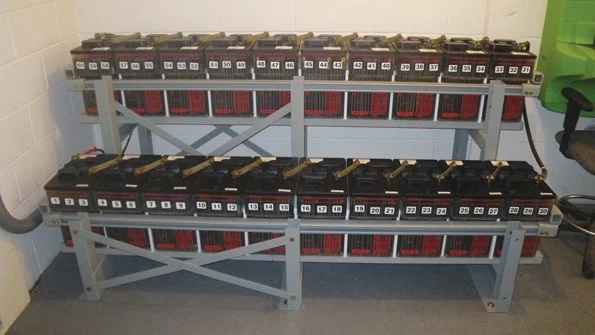A Comprehensive Guide on Storing Server Rack Batteries at Home

Introduction
Server rack batteries play a crucial role in ensuring uninterrupted power supply to critical systems and data centers. However, there may be instances when you need to store these batteries at home temporarily or for maintenance purposes. Proper storage is essential to maintain their efficiency and extend their lifespan. In this article, we will provide you with a comprehensive guide on how to store server rack batteries at home, emphasizing safety measures and best practices.
Understanding Server Rack Batteries
Before diving into storage techniques, it’s important to have a basic understanding of 48v server rack batteries. These batteries are typically sealed lead-acid (SLA) or lithium-ion (Li-ion) batteries designed to provide backup power during outages. SLA batteries are more common due to their cost-effectiveness, while Li-ion batteries offer higher energy density and longer lifespan.
Preparing for Storage
Proper preparation is crucial before storing server rack batteries at home. Follow these steps to ensure a safe and efficient storage environment:
- Disconnecting: Before removing the batteries, ensure the power supply to the server rack is disconnected, and all equipment is powered off.
Cleaning: Thoroughly clean the batteries using a soft cloth and mild detergent solution to remove any dirt or residue. Avoid using abrasive materials that could damage the battery’s casing. Ensure the batteries are clean and free from dirt, dust, or any other contaminants. Use a soft cloth or brush to gently clean the battery surfaces.
- Inspection: Examine each 51.2v 100ah battery for signs of damage, leakage, or corrosion. Discard any batteries that show signs of swelling or other abnormalities.
Charge Level: Ideally, batteries should be stored at a charge level between 50% and 75%. If the batteries are fully discharged, recharge them to the recommended level before storage.
Choosing the Right Storage Location
The choice of storage location is crucial for maintaining battery performance and safety. Consider the following factors when selecting an appropriate storage area:
- Temperature and Humidity: Batteries should be stored in a cool, dry place. Avoid extreme temperatures and high humidity, as they can accelerate battery degradation.
- Ventilation: Ensure that the storage area is well-ventilated to prevent the buildup of hydrogen gas released during battery charging. This gas is highly flammable and poses a safety risk.
- Security: Store the batteries in a secure location, away from children and pets. Use lockable cabinets or dedicated battery storage containers for added safety.
- Accessibility: The storage area should be easily accessible for routine inspections and maintenance. Avoid stacking batteries too closely together to allow for proper airflow.
Storage Duration and Maintenance
If server rack batteries need to be stored for an extended period, it is important to follow these guidelines:
- Regular Inspections: Check the batteries periodically for any signs of leakage, corrosion, or physical damage. Replace any damaged batteries immediately. Perform visual inspections regularly to check for signs of damage, corrosion, or leakage. If any issues are detected, consult a professional for further evaluation or replacement.
- Charge Maintenance: If possible, charge the batteries to the recommended level every six months to prevent self-discharge. This helps maintain their performance and prolong their lifespan. Periodically charge the batteries to maintain their charge levels within the manufacturer’s recommended range.
- Labeling: Clearly label each battery with its installation date and other relevant information. This will help you keep track of the battery’s age and ensure proper rotation if multiple batteries are in use. Clearly label each battery with relevant information, including the date of storage, manufacturer details, and any specific handling instructions. Maintain a record of this information for future reference.
- Environment Monitoring: Keep track of the storage area’s temperature and humidity levels using suitable monitoring devices. Address any deviations from the optimal ranges promptly to prevent adverse effects on battery performance.
- Safety Measures: Have appropriate safety equipment nearby, such as fire extinguishers and protective gear, in case of emergencies. Educate yourself and household members on proper safety procedures to follow in case of battery-related incidents.
Conclusion
Properly storing server rack batteries at home is essential for their safety and long-term performance. By following the steps outlined in this guide, you can create a suitable storage environment that safeguards the batteries and extends their lifespan.
Remember to prioritize safety by adhering to proper cleaning procedures, choosing an appropriate storage location, and conducting regular inspections. With these practices in place, you can ensure that your server rack batteries are well-maintained, ready for use when needed, and provide reliable backup power to critical systems.